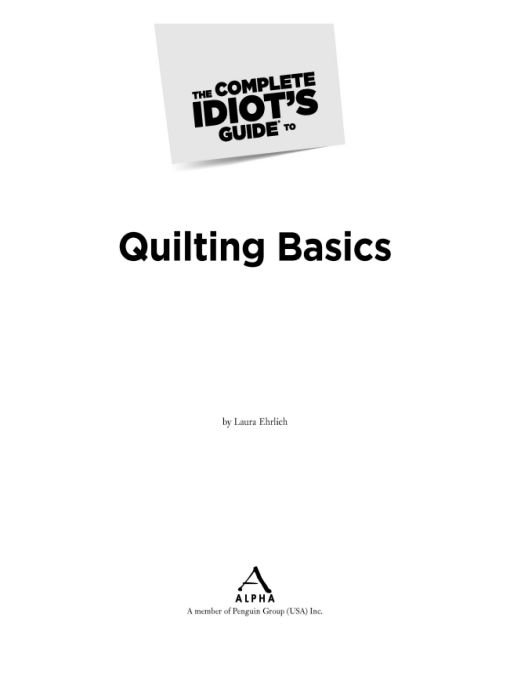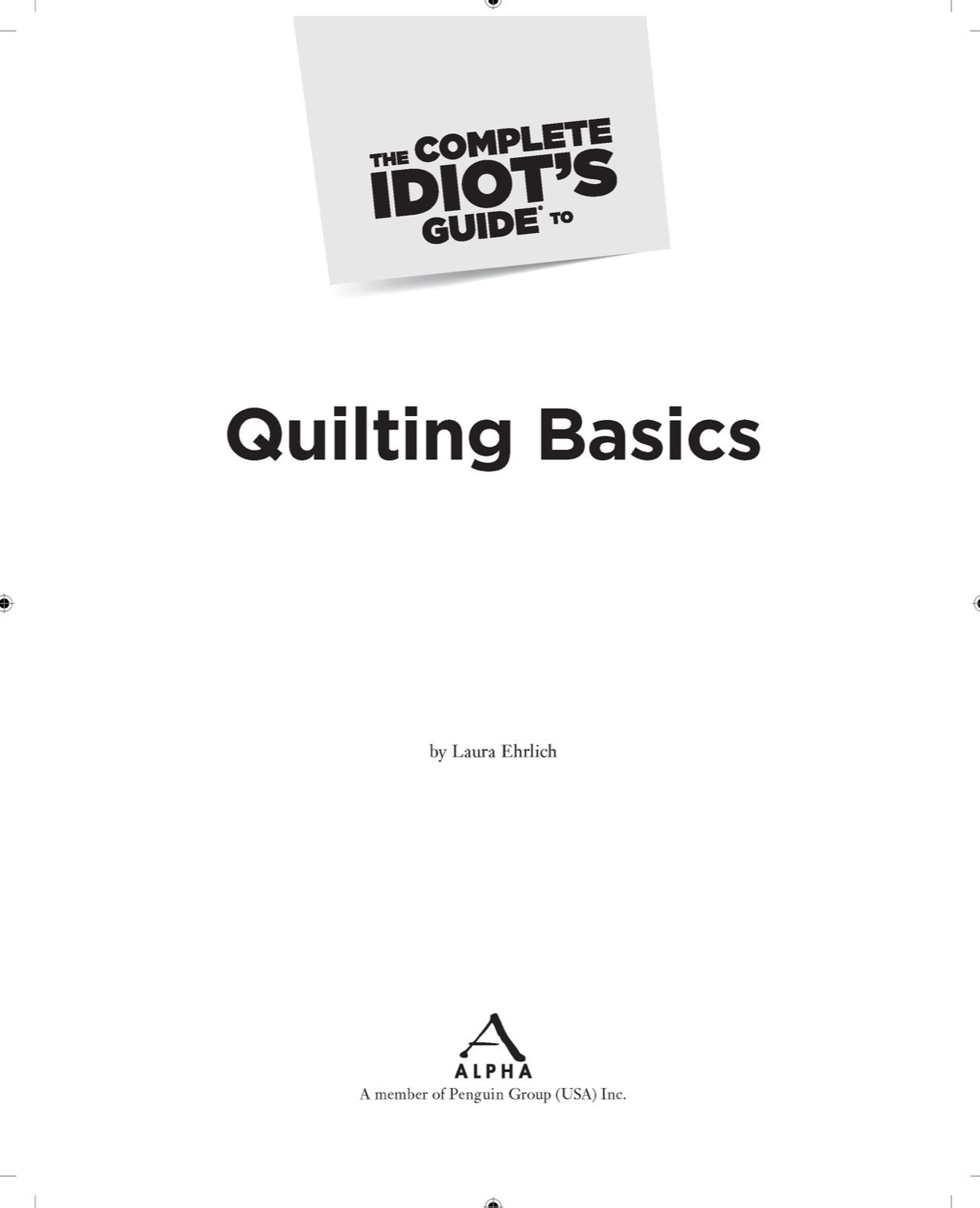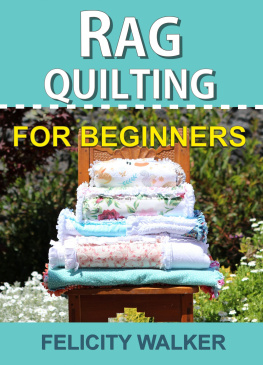Table of Contents
To my loving and supportive family, my husband Elliott, daughters Jamie, Jessica, and Amanda, and son-in law Ed.
Introduction
I always get a comfortable feeling when I look at a room that has a quilt in it. There is nothing like a quilt to add warmth and beauty to a room. Quilts have an appeal that has lasted through centuries. Some people regard quilts as an investment and collect antique quilts. Nowadays we are valuing quilts more and more as works of art. You can see quilts displayed in museums and art galleries as the new textile art. Most people, however, just like quilts because they are beautiful to have around.
If you are someone who loves quilts and has decided to join your heritage and create your own quilt, you have many decisions to make. Quilts come with a variety of different names, designs, and options that make the quilting process complicated enough, without throwing in the dilemma of choosing colors. Where do you begin?
I began by looking through quilt books for inspiration. Then I walked through craft stores and linen departments to see what I liked. Finally, my friend Linda twisted my arm and I took a class in beginner quilting. I loved the classespecially the creativity and productivity! At the end of 10 weeks, I had lots of squares of quilt block designs but did not know what to do with them. It bothered me that putting these blocks together into a quilt was only briefly discussed in the class. That is where the idea for offering my own class and writing this book came into being.
This book will take you from start to finish in making a quilt. It will give you a basic understanding of quiltstheir history, types, and names. Youll learn about quilt components and quilt construction. I will take you step by step through all the decisions you have to make. You will learn how to plan the quilt, buy the materials, piece the quilt top, quilt, and sign your work of art.
What Youll Find in This Book
Beginners need to be realistic. Quilts vary in size, and the designs range from easy to very challenging. I encourage beginners to experiment with a variety of simple designs for a small project. The best way to learn quilting is to make a Sampler quilt. The Sampler quilt combines different designs, both pieced and appliqud. You can pick and choose blocks, starting with the easy ones and then, as you become more accomplished, going on to make more challenging ones.
Part 1, Getting Ready to Quilt! gives you a general understanding about types of quilts and how our ancestors developed them. There are many decisions to make, so first take some time to look at the quilt patterns throughout this book and choose the quilt you would like to make. Well take the mystery out of planning the size and selecting colors to make your quilt one that you will want to live with for a lifetime.
In Part 2, Get SetWhat You Need to Start, youll learn about equipment and materials. There are certain supplies that you will need to get started. I have listed the necessitiesyoull find many of them around the house, but there are some neat gadgets that could help you in your quest for the perfect quilt. Probably the scariest part in making a quilt is purchasing the fabric. There are so many choices it boggles the brain. Knowing the type of fabric and how much you need will help put your mind at ease.
Part 3, Were Home and Ready to Go, provides you with a general knowledge of fabric characteristics. Templates or quilt patterns must be made and transferred onto the fabric. Youll discover how to cut your fabric and put the pieces of the quilt together.
The chapters in Part 4, Lets Put It All Together, include step-by-step instructions of the stitches that will help your quilt be durable and hold up to everyday usage. We also dont forget the quickness and practicality of machine-made quilts. Once your blocks are made, its time to put them together and frame them out into your quilt top.
By Part 5, Assembling and Quilting Your Quilt, you need to know about the filling batting and a backing. How much and what type to purchase for your quilt is examined. Holding this quilt sandwich together in wrinkle-free layers is imperativebasting is your key to success. And then its time to learn how to quilt! I help you decide how to give your quilt the three-dimensional life it deserves by tying, hand quilting, or machine quilting. We need to address the finishing touches. Youll find out how to eliminate all those frayed edges. Artists sign their creations and so should quilters. After all the time, work, and love you have put into your quilt, youll learn how to take care of it with tender, loving care. Well even go through the steps it takes to make a beginner Sampler quilt!
Extras
There are many steps involved in making a quilt. This book is designed to make it as easy as possible and help you avoid any problems. Sidebars are scattered throughout the book and will highlight things I feel are important for all quilters to know.
SCRAPS AND PIECES
This sidebar offers a variety of different quilt stories, historical tidbits, or just interesting information about quilting.
DONT GET STUCK!
Throughout my many years of teaching beginner quilters, I have discovered many different pitfalls that may occur. Hopefully the hints in these sidebars will help you avoid these problems.
QUILTING BEE
Sometimes there is an easy way of doing something, and these tips are ones that you would learn at a quilting bee.
QUILT TALK
Quilters seem to have a language of their own. Any new and unusual words will be explained in these sidebars.
But Wait! Theres More!
Have you logged on to idiotsguides.com lately? If you havent, go there now! As a bonus to the book, Ive included tons of additional information, quilt projects, and other fun bits and pieces youll want to check out, all online. Point your browser to idiotsguides.com/quilting, and enjoy!
Acknowledgments
Many people have contributed to this quilting guide. First of all I would like to thank my husband, Elliott, and my girls, Jamie, Jessica, Amanda, and son-in-law Ed for encouraging me, helping me with all my computer glitches, and putting up with me in general. Heres to all the times youve forgiven me when youve stepped on runaway pins while I was working on a quilting project. Ill always be grateful to my mother, Tony Mangano, for giving me an appreciation of fabrics and taking me all over the state looking for fabric when I first started sewing. Thanks especially to Linda Mayer, my wonderful friend who twisted my arm and made me take my first quilting class, and to Debra for allowing me to teach quilting in her store. A thank you to Lori Groveman for helping me to overcome my computer phobia.













